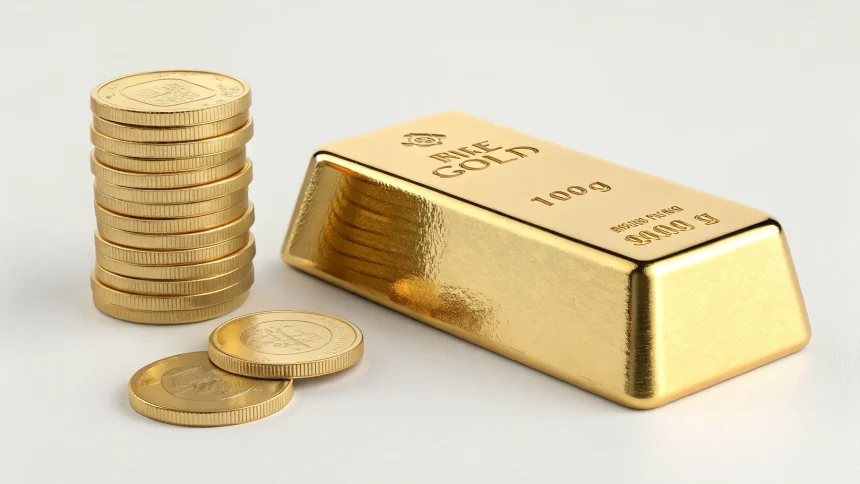Gold prices are being closely monitored by investors and economists as a potential indicator of the precious metal’s ability to serve as an inflation hedge. As inflation concerns continue to impact global markets, many are turning to traditional safe-haven assets like gold to protect their wealth.
The relationship between gold and inflation has historically been significant, with the metal often rising in value during periods of high inflation. This connection stems from gold’s inherent properties as a finite resource with intrinsic value, unlike fiat currencies which can be devalued through monetary policy.
Current Market Performance
Today’s gold market shows notable movement as investors respond to recent economic data. The precious metal has experienced price fluctuations that analysts are carefully examining for signals about its effectiveness as an inflation hedge in the current economic climate.
Market experts point out that gold’s performance must be viewed in context with other economic indicators, including interest rates, dollar strength, and broader market sentiment. These factors collectively influence how effectively gold can protect purchasing power during inflationary periods.
Recent trading sessions have demonstrated gold’s sensitivity to Federal Reserve policy announcements and inflation data releases, reinforcing its status as a barometer for economic uncertainty.
Historical Perspective on Gold as an Inflation Hedge
Gold has long been considered a store of value during economic turbulence. During the high inflation period of the 1970s, gold prices rose dramatically, providing substantial returns for investors who sought protection from rapidly increasing consumer prices.
However, this relationship hasn’t always been consistent. During some inflationary periods, gold has underperformed relative to expectations, leading some analysts to question its reliability as an inflation hedge.
Key historical inflation-gold correlations include:
- 1970s stagflation: Gold prices increased nearly tenfold
- 2008 financial crisis: Initial gold sell-off followed by strong rally
- 2020-2022 pandemic inflation: Mixed performance relative to inflation rates
Investor Strategies in the Current Environment
Investment professionals are divided on the optimal approach to gold in the current market. Some advocate for increased allocation to the precious metal as a portfolio diversifier and potential inflation buffer, while others suggest that alternative assets might provide better protection.
Portfolio managers note that gold’s lack of yield remains a consideration for investors, particularly in environments where interest rates are rising to combat inflation. This opportunity cost can diminish gold’s appeal compared to interest-bearing assets.
“The true test of gold as an inflation hedge comes not in short-term price movements but in its ability to maintain purchasing power over extended periods of economic stress,” notes one market analyst tracking the precious metal’s performance.
Central bank gold purchases have also accelerated in recent years, with many nations increasing their reserves. This institutional buying provides underlying support for gold prices and signals confidence in the metal’s long-term value proposition.
Factors Affecting Gold’s Performance
Several key variables are currently influencing gold prices beyond just inflation expectations. The strength of the U.S. dollar, which typically moves inversely to gold, remains a critical factor. As the dollar strengthens, gold often becomes more expensive for holders of other currencies, potentially suppressing demand.
Geopolitical tensions also drive investment in gold as a safe haven. Current global conflicts and trade disputes have periodically boosted gold prices as investors seek assets perceived as secure during uncertain times.
Physical demand from major gold consumers like China and India continues to affect the market, with jewelry and investment demand responding to cultural factors and local economic conditions alongside global inflation concerns.
As investors continue to navigate uncertain economic waters, gold’s performance in the coming months may provide valuable insights into its enduring role as a potential inflation hedge and portfolio stabilizer. Whether the precious metal will live up to its historical reputation remains a question that today’s market movements are helping to answer.







